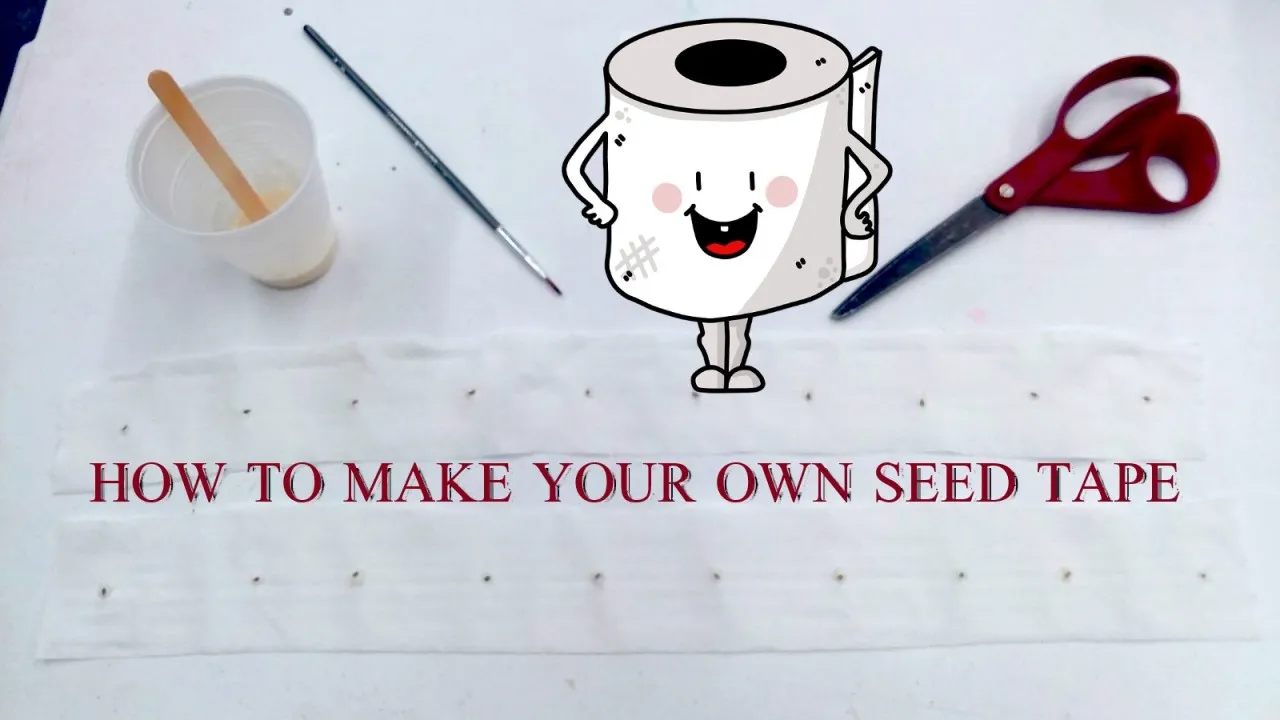
Our library district tries to offer gardening-related programs every spring, so I spent today working on seed tape. It's a great way to manage those crops with little seeds which always get planted way too densely and need repeated thinning as a result. It wastes seeds and your time. Here's how you can make your own tape while you wait for the weather to be ready for planting up here in the northern latitudes!
Supplies
- Toilet paper (the cheaper the better, now that the Great Toilet Paper Shortage of 2020 seems to be well and truly over)
- Scissors
- Paste (a 50/50 mix of flour and water works well)
- Paintbrush (cheap small watercolor type)
- Seeds (carrot, lettuce, beets, etc)
Directions
Tear off a length of toilet paper, perhaps 3-4 feet long. If you're in Metric country, it must be exactly one meter. No more, no less. Cut it down the middle to make two strips. Fold it over onto itself a couple times to simplify the process.
Mix about a Tablespoon (precisely 15 milliliters!) each of water and flour. Mix thoroughly.
Use your paintbrush to dab dots of paste along the length of your toilet paper strips. If done slightly toward one edge, it makes later steps easier. Guess how I found that out? If you said, "doing that right from the start," you lose!
Toilet paper sheets are usually perforated into sections about 4" long, so this can be a handy guide to dot spacing. Two dots per sheet nets 2" spacing, and so on. Based on the final suggested spacing for your crop, paint your paste dots along a strip, poke a seed into each dot, and set aside to dry.
If you don't have directions on your seed packet, here are some ballpark suggestions.
Carrots: 2-3" (50-75mm)
Chives: 4" (100mm)
Radishes: clusters of a few seeds every 3-4" (75-100mm)
Turnips: 3-6" (75-150mm)
Beets: clusters of a few seeds every 4-6" (100-150mm)
Lettuce: 6-8" (150-200mm) unless you want lots of more closely-spaced baby lettuce as it grows.
I expect to see those calipers dialed in, everyone outside the USA!
Once the paste has dried, fold over the strips for extra security, fold/roll into a small bundle, and store. Label either the tape or the container unless you really like mystery crops.
Planting
This process works best for small seeds, and those should not be buried too deep. Just make a small trench and unfurl your seed tape into it. Bury with 1/4" or so (5mm exactly!) of soil, or as directed by the seed packet, before watering thoroughly. The paste and toilet paper are quite biodegradable, and theoretically environmentally-friendly.
GMO wheat flour may or may not result in an arsenal of weaponized horticultural defenses à la Plants vs. Zombies. After 2020 and 2021, that might be a good way to prepare for 2022...

